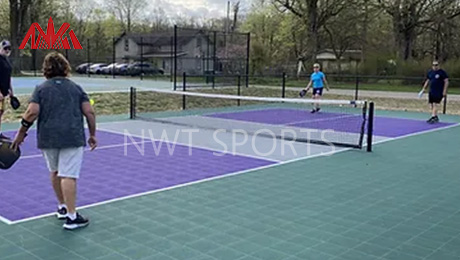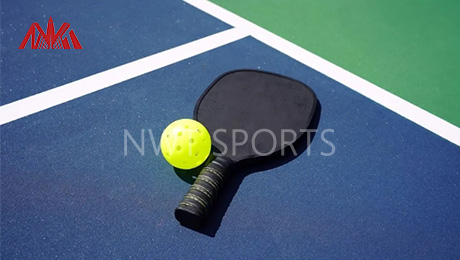When designing or constructing an outdoor pickleball court, factors such as sun and wind play a crucial role in ensuring an optimal playing experience. Improper orientation can lead to player discomfort and negatively impact gameplay. This article explores the importance of court orientation and provides practical tips for minimizing the effects of sun and wind on your court.
1. Why Court Orientation Matters
Outdoor pickleball courts are exposed to natural elements that can influence gameplay. Two key challenges are:
· Sunlight: Direct sunlight can cause glare, making it difficult for players to track the ball. It can also lead to discomfort and fatigue during prolonged play.
· Wind: Strong or inconsistent winds can alter the ball's trajectory, disrupting the flow of the game and frustrating players.
Proper court orientation can help mitigate these issues, providing a fair and enjoyable playing environment.
2. Ideal Orientation to Reduce Sun Glare
The sun's position changes throughout the day and varies by location and season. However, some general rules apply:
· North-South Orientation: Positioning the court along a north-south axis minimizes the impact of the rising and setting sun. This ensures that players are not directly facing the sun during morning or evening matches.
· Adjustments for Latitude:
· In regions closer to the equator, where the sun is overhead for most of the day, a slightly tilted north-south orientation can further reduce glare.
· In higher latitudes, accounting for the sun's lower angle in the sky during winter months can improve year-round usability.


3. Strategies to Mitigate Wind Challenges
Wind can be unpredictable, but thoughtful planning can minimize its effects:
· Windbreaks: Install fences, hedges, or walls around the court to block wind. These barriers should be tall enough to deflect strong gusts but allow airflow to prevent turbulence.
· Court Placement: If possible, locate the court in a naturally sheltered area, such as between buildings or near tree lines, to reduce wind exposure.
· Surface Design: Choose flooring materials with texture or grip to ensure stability even when the wind impacts player movement.
4. Additional Considerations for Court Comfort
Beyond sun and wind, consider these factors to enhance the court experience:
· Shade Structures: Install awnings, canopies, or nearby trees to provide relief from intense sunlight.
· Lighting for Evening Play: Adding LED sports lights allows for extended playtime when the sun sets, especially in summer months.
· Drainage and Maintenance: Ensure proper court drainage to handle rain and prevent water accumulation, keeping the court ready for play.
5. Testing Orientation Before Construction
Before finalizing the court’s orientation, spend time observing the chosen site:
· Track the sun’s movement throughout the day to determine how shadows and glare will affect play.
· Use a portable wind gauge to measure wind patterns and identify the best placement for windbreaks.
Conclusion
Proper orientation is vital when building an outdoor pickleball court. By aligning the court along a north-south axis, incorporating windbreaks, and planning for natural elements, you can create a playing surface that minimizes distractions and enhances the overall experience for players.
For expert advice and high-quality materials tailored to pickleball court construction, contact NWT Sports, a trusted leader in durable and weather-resistant sports flooring solutions.
Post time: Dec-31-2024
